Over the past six months we’ve been extremely fortunate to have the opportunity to train one of America’s most accomplished sport climbers. I can say unequivocally that the experience has been one of the highlights of my varied climbing career. It’s every coach’s dream to work with the very best athletes within a given sport, and we are no different. While we have tremendous confidence in our program, and its long track-record of producing results for mortals like us, we’ve long ‘fantasized’ about recruiting an elite-level guinea pig for some next-level experimentation. Would it work for a top-level athlete? Can it be adapted to the full-time climbing schedule of a legit pro? There was only one way to find out, but we needed a strong climber with an open mind.
Over the last summer, Mike ran into our mutual friend Jonathan Siegrist at Wild Iris. Jonathan’s work ethic is unparalleled, and his tick list speaks for itself (over 100 5.14 sends, multiple 5.14 flashes, and numerous 5.14c and d first ascents), but he’s also extremely intelligent and thoughtful. He respects our sport’s history, while pulling out all the stops to carve out a bigger and better future. He’s the kind of climber you can’t help but root for. The two discussed our upcoming book (which Jonathan graciously offered to review for the back cover) and Jonathan mentioned that he was looking to try a more structured approach to his already legendary training habits. Mike eagerly volunteered our services to help him develop a new training strategy.
Jonathan was the perfect candidate for the Lazy H Training Laboratory. When he’s committed, he’s unstoppable, but he also brings a healthy amount of skepticism to the table. He’s worked hard to get where he is, and he’s not inclined to risk his hard-earned fitness on the flavor of the month. He had been talking with various training gurus around the country, and after a sneak peak at our book, he felt our program might be the right approach for him.
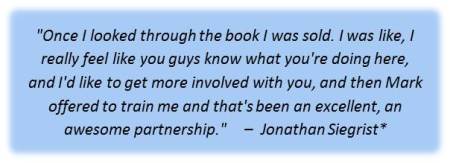 In November the three of us finally got around to hatching a plan. I met with Jonathan at my home in Evergreen to discuss his goals, strengths, and weaknesses, and to develop a strategy. Jonathan lamented that he had basically been at the 5.14d-level for the past three years. Granted, it’s a grade most of us would be satisfied with, but the great ones are great precisely because they’re never satisfied. Prior to this, he had made pretty steady progress throughout his career. He had tried many different things but couldn’t seem to break through this plateau. He had some impressive goals on the horizon, and he was extremely determined to take his climbing to the next level in order to achieve them. He wanted to put himself into position to firmly establish the 5.15 grade in America. As we sat at my kitchen table, he summed up his motivation in a simple manner we can all relate to: “I want to send man! I’m not getting any younger.”
In November the three of us finally got around to hatching a plan. I met with Jonathan at my home in Evergreen to discuss his goals, strengths, and weaknesses, and to develop a strategy. Jonathan lamented that he had basically been at the 5.14d-level for the past three years. Granted, it’s a grade most of us would be satisfied with, but the great ones are great precisely because they’re never satisfied. Prior to this, he had made pretty steady progress throughout his career. He had tried many different things but couldn’t seem to break through this plateau. He had some impressive goals on the horizon, and he was extremely determined to take his climbing to the next level in order to achieve them. He wanted to put himself into position to firmly establish the 5.15 grade in America. As we sat at my kitchen table, he summed up his motivation in a simple manner we can all relate to: “I want to send man! I’m not getting any younger.”
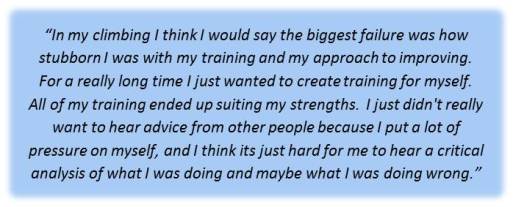 We talked about his normal climbing and training approach, reviewed some video of his recent achievements, and generally tried to create a general picture of where he was, and where he needed to go. With all the humility I can summon, I’d like to think I see a lot of myself in Jonathan’s climbing. He likes to flash the same styles of routes I like to project 🙂 Ignoring magnitude, we have similar strengths and weaknesses. In that sense, I felt well-qualified to design a training plan he could use to deliver himself from Point A to Point B, but I had a significant fear. Jonathan was already one of the best climbers in the world, so clearly he was doing something right. The last thing I wanted to do was somehow make him worse (or cause an injury) by tinkering with his approach. You don’t just paint over the Mona Lisa and hope that you end up with something better.
We talked about his normal climbing and training approach, reviewed some video of his recent achievements, and generally tried to create a general picture of where he was, and where he needed to go. With all the humility I can summon, I’d like to think I see a lot of myself in Jonathan’s climbing. He likes to flash the same styles of routes I like to project 🙂 Ignoring magnitude, we have similar strengths and weaknesses. In that sense, I felt well-qualified to design a training plan he could use to deliver himself from Point A to Point B, but I had a significant fear. Jonathan was already one of the best climbers in the world, so clearly he was doing something right. The last thing I wanted to do was somehow make him worse (or cause an injury) by tinkering with his approach. You don’t just paint over the Mona Lisa and hope that you end up with something better.
The over-arching strategy was to improve Jonathan’s explosive power (from a physical standpoint) and aggressiveness, since these seemed to be the clear limiting factors in his climbing. We hoped to accomplish that in two primary ways. First, we wanted to drastically cut back Jonathan’s training volume to facilitate higher-intensity training. At that point, Jonathan was performing a super-human volume of climbing and training: “I learned to train very much in the vein of Tommy [Caldwell] — beat yourself up like crazy. Usually my training days would be doing 3-4 hours of routes or boulders in the gym in sets, then weight room for a series of opposition / finger board for an hour, then an hour run. I go on like this for 2 or 3 days in a row and then 1 day off completely. I rarely take more than 1 day off and I never take off a week, etc.” This was obviously a huge factor in his success as a climber—it gave him the ability to hang on forever, and it helped hone his technical skills. These strengths are evident in his climbing, and the routes he likes to climb. Clearly we didn’t want to sabotage those strengths, but something had to be done about his power, and you can’t train power effectively when you’re tired.
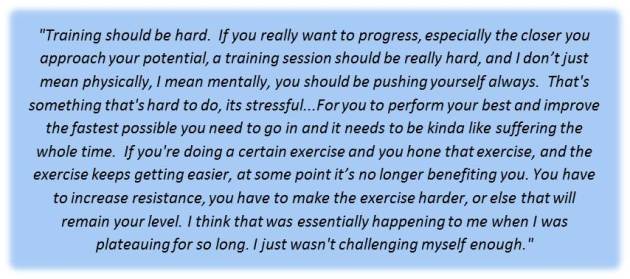 The second part of the plan was to mesh the Rock Prodigy program elements with Jonathan’s already-Herculean training schedule. Jonathan wanted to prepare primarily for a lifetime goal-route he hoped to try in late spring 2014, so we had time to complete two short training cycles. This was huge, as it gave us the flexibility to take some risks the first season, and then tweak the program in time to get the best results for the all-important spring season.
The second part of the plan was to mesh the Rock Prodigy program elements with Jonathan’s already-Herculean training schedule. Jonathan wanted to prepare primarily for a lifetime goal-route he hoped to try in late spring 2014, so we had time to complete two short training cycles. This was huge, as it gave us the flexibility to take some risks the first season, and then tweak the program in time to get the best results for the all-important spring season.
We skipped the Base Fitness Phase since that is the last thing Jonathan needs, but recommended a complete Strength and Power Phase. Jonathan’s finger strength was already quite good, but we really wanted to see if we could make some improvements in that area, and we felt that hangboarding provides really important preparation for the power training activities we wanted to emphasize later in the cycle. Jonathan took straight to the hangboard. He has an analytical mind, and a slightly sick love of suffering — traits that are well-suited to the hangboard.
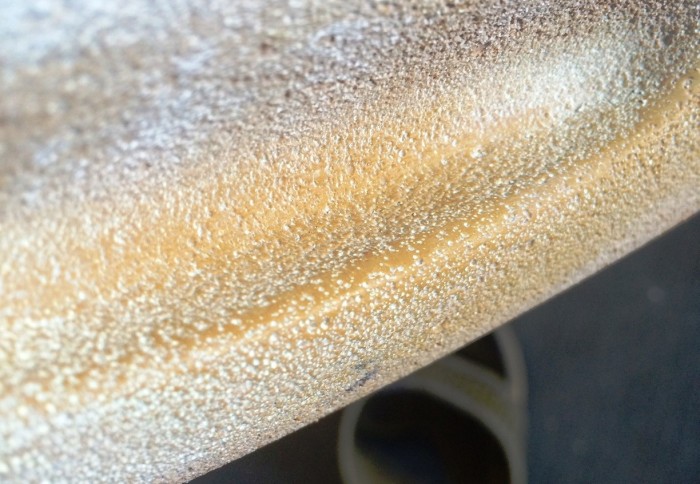
“So dude. I was getting super frustrated because I felt like I was constantly slipping off the hang board and shit was getting so much harder even with perfect temps, so I took the board down and inspected to find that I’ve literally worn the texture off…”
We really wanted to emphasize Limit Bouldering and Campusing, especially aggressive, explosive movements on the wall. Jonathan is wicked strong with crazy lock-off strength, which allows him to do many hard moves statically, but that’s oftent not the most efficient way to do a hard move. During our first meeting in November, I took him out to my barn and asked him to do an “explosive pull-up”. Despite cranking out numerous 1-arm pull-ups with each arm, he just couldn’t do an explosive pull-up. His muscles didn’t know how to contract quickly. He was super impressed to see me do a double dyno on the campus board with ease (after a few minutes of coaching, Jonathan was able to do one too). Our plan hinged on making some significant strides during the Power Phase, both in terms of contact strength and climbing style. We really wanted to get Jonathan swinging around and going for it on dynamic moves.
Since Jonathan is essentially a full-time pro, and not restricted to the Weekend Warrior approach, it was important that he get regular days outside to keep him sane and psyched. To that end, the Power Endurance Phase would be performed entirely outdoors on Jonathan’s Las Vegas-area projects. On a micro-scale, we prescribed a two-days-on/one-day off schedule in which he would train inside, per the RP method, on the first day on, and then climb outside on projects (or indoors on gym routes if the weather was no good) on day two. Occasionally he would go three days on, climbing outside the second and third days. This ensured he had a rest day before each training session, so he could really get after it with high intensity work.
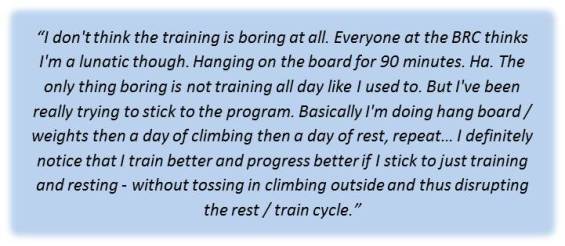 One of the really cool and fun aspects of this experiment is being on the receiving end of Jonathan’s limitless psych. We would periodically receive random stoke emails with little blurbs like: “Dudes, I really think the training is working.”, “training works!”, “I’m super stoked! It’s definitely working. I’m really excited to imagine what I’ll feel like after finishing this”, and “…this shit works!” It’s always super cool and motivating to get one of these emails, but in my heart I’ve always been my own worst critic, and harbored significant anxieties about the results of our experiment. I was seriously anxious to see how things would work out once Jonathan returned to a serious project.
One of the really cool and fun aspects of this experiment is being on the receiving end of Jonathan’s limitless psych. We would periodically receive random stoke emails with little blurbs like: “Dudes, I really think the training is working.”, “training works!”, “I’m super stoked! It’s definitely working. I’m really excited to imagine what I’ll feel like after finishing this”, and “…this shit works!” It’s always super cool and motivating to get one of these emails, but in my heart I’ve always been my own worst critic, and harbored significant anxieties about the results of our experiment. I was seriously anxious to see how things would work out once Jonathan returned to a serious project.
During the spring of 2013, Jonathan started trying a new, gob smacking project in Arrow Canyon. It took him a week that season just to work out the moves. After several weeks of work, the temperatures became unbearable, and so Jonathan moved on without a redpoint. After about six weeks on our program, we were all excited to see how The Arrow Canyon project would go when he returned in January 2014. We were all a bit surprised by the initial results. On only his fourth day back on the project, La Lune was born: “In some ways it was strange to work myself up. I just thought it was going to be such a big battle, and then I came back and, it’s all relative, but it felt quite easy compared to the way that I was climbing on it and the way that I felt about it last year… It was very clear to me almost immediately that the training had worked, and I was climbing at a higher level than I had last year.”
Jonathan went on to polish off several other Vegas area routes, including completing the FA of Spectrum at The Promised Land. Then it was time to get back into training mode, and prepare for his primary goal of 2014. It was pretty rad to see Jonathan crushing on routes that were really pushing him the year before. That said, Jonathan asked for our help because he wanted to get to a new level, and we hadn’t achieved that yet….
Check back next week for “Trainer to the JStars: Part 2″
Note: If you haven’t already heard it, we highly recommend Jonathan’s Podcast interview with Neely Quinn on Trainingbeta.com. Jonathan talks extensively about his collaboration with us and the results of his new training approach. The podcast was the source of many of Jonathan’s quotes in this article.
*All quotes are from Jonathan’s personal correspondence, blog posts, and the interview with Neely Quinn.
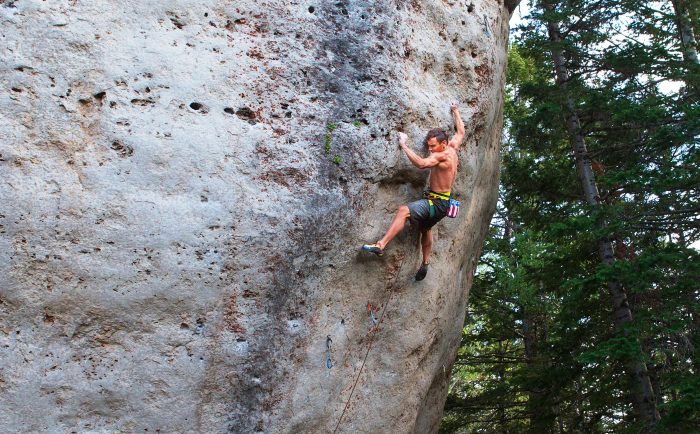


Pingback: Trainer to the JStars: Part 1 – New Post on RCTM.com! | Lazy H Climbing Club
Thanks so much for everything guys, and this is a really great read btw! You guys are the true inspiration!
LikeLike
You’re very welcome. Sick work on Speed! That looks so amazing, and you’re crushing right now!
LikeLike
starting with full disclosure: i read powercompanyclimbing blog as often as I read yours – i really like the work on both blogs (i did buy a copy of your book!).
A recent blog post over there (powercompanyclimbing) discussed Eva Lopes’s training boards and programs. Would love to hear your thoughts on: 1) training on edges only, and 2) differences between your vision of repeaters (3 sets+, multiple reps) vs a system with only 3 reps or so
.
LikeLike
Pingback: Trainer to the JStars: Part 2 | The Rock Climber's Training Manual
Pingback: Trainer to the JStars: Part 2 - Climbers Guide
Pingback: Jonathan Siegrist: Life After Professional Climbing - CLIPPING CHAINS
Thanks for ssharing this
LikeLike